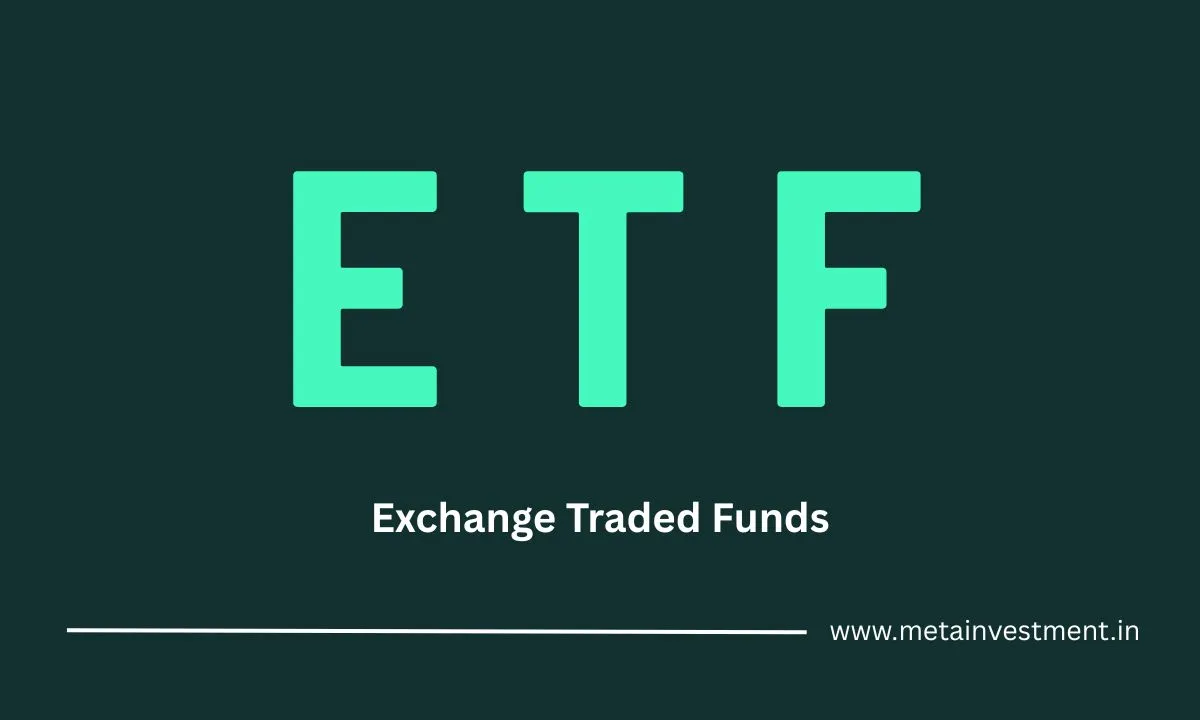Exchange-Traded Funds (ETFs) have revolutionized investing by offering a low-cost, diversified, and flexible way to participate in financial markets. ETFs combine the benefits of mutual funds and stocks, trading on exchanges like individual securities while holding a basket of assets.
This article explores ETFs in India and globally, covering their types, benefits, risks, and how to invest in them.

What is an ETF?
An ETF is a pooled investment vehicle that tracks an index, commodity, sector, or other asset class. Unlike mutual funds, ETFs trade on stock exchanges throughout the day at market-determined prices.
Key Features of ETFs:
- Diversification: Invests in multiple securities, reducing risk.
- Liquidity: Traded like stocks on exchanges.
- Low Expense Ratios: Generally cheaper than mutual funds.
- Transparency: Holdings are disclosed daily.
- Tax Efficiency: Lower capital gains taxes in some jurisdictions.
Types of ETFs
1. Equity ETFs
- Track stock indices like Nifty 50, S&P 500, or NASDAQ.
- Examples: Nippon India Nifty 50 ETF (India), SPDR S&P 500 ETF (Global).
2. Bond/Fixed-Income ETFs
- Invest in government or corporate bonds.
- Examples: BHARAT Bond ETF (India), iShares Core U.S. Aggregate Bond ETF (Global).
3. Commodity ETFs
- Track gold, silver, oil, or agricultural products.
- Examples: Gold Bees (India), SPDR Gold Shares (Global).
4. Sector & Thematic ETFs
- Focus on specific industries (tech, healthcare, banking).
- Examples: ICICI Prudential IT ETF (India), ARK Innovation ETF (Global).
5. International ETFs
- Provide exposure to foreign markets.
- Examples: Motilal Oswal NASDAQ 100 ETF (India), iShares MSCI Emerging Markets ETF (Global).
6. Smart Beta & Factor ETFs
- Use alternative weighting strategies (dividends, volatility).
- Examples: Edelweiss ETF - Nifty 100 Quality 30 (India), Invesco S&P 500 High Dividend Low Volatility ETF (Global).
ETFs in India: Growth & Popular Options
Why ETFs are Gaining Popularity in India?
- Lower Costs: Expense ratios as low as 0.05%-0.35% vs. 1-2% for mutual funds.
- Passive Investing Trend: More investors prefer index-tracking funds.
- Regulatory Push: SEBI promotes passive funds for cost efficiency.
- Tax Benefits: Equity ETFs held for over 1 year qualify for 10% LTCG tax (vs. 15% for short-term).
Top ETFs in India (2025)
| ETF Name | Index Tracked | Asset Class |
|---|---|---|
| Nippon India Nifty 50 ETF | Nifty 50 | Equity |
| ICICI Prudential Nifty Next 50 ETF | Nifty Next 50 | Equity |
| SBI Gold ETF | Gold Prices | Commodity |
| BHARAT Bond ETF | Government Bonds | Fixed Income |
| Motilal Oswal NASDAQ 100 ETF | NASDAQ-100 | International Equity |
Global ETFs: Trends & Top Funds
Why Invest in Global ETFs?
- Diversify Beyond India: Access US, Europe, and emerging markets.
- Currency Hedge: Protect against INR depreciation.
- Exposure to Tech & Innovation: Invest in FAANG, AI, and blockchain ETFs.
Top Global ETFs (2025)
| ETF Name | Index Tracked | Region |
|---|---|---|
| SPDR S&P 500 ETF (SPY) | S&P 500 | US |
| Invesco QQQ Trust (QQQ) | NASDAQ-100 | US (Tech-heavy) |
| iShares MSCI Emerging Markets ETF (EEM) | MSCI Emerging Markets | Global (EM) |
| Vanguard Total World Stock ETF (VT) | Global Stocks | Worldwide |
| SPDR Gold Shares (GLD) | Gold Prices | Commodity |
How to Invest in ETFs?
In India:
- Open a Demat & Trading Account (Angel One, Zerodha, Groww, ICICI Direct).
- Choose an ETF (Nifty 50, Gold, Sectoral).
- Place an Order via your broker (Lump-sum or SIP).
Globally:
- Use International Brokers (Interactive Brokers, Vested, INDmoney).
- Invest via Fund of Funds (FoFs) in India (Motilal Oswal NASDAQ 100 FoF).
- Consider ETFs with India-focused global exposure (iShares India 50 ETF).
ETFs vs. Mutual Funds vs. Stocks
| Feature | ETFs | Mutual Funds | Stocks |
|---|---|---|---|
| Trading | Exchange-traded | End-of-day NAV | Exchange-traded |
| Cost | Low (0.05%-0.5%) | Higher (1-2%) | Brokerage + Taxes |
| Diversification | High | High | Single-stock risk |
| Liquidity | High (Intraday) | Low (Redemption delay) | High |
Risks of Investing in ETFs
- Market Risk: ETFs follow underlying assets (stocks fall → ETF falls).
- Tracking Error: Some ETFs don’t perfectly replicate indices.
- Liquidity Risk: Less popular ETFs may have low trading volumes.
- Currency Risk (Global ETFs): INR depreciation can impact returns.
Conclusion: Are ETFs Right for You?
ETFs offer a low-cost, diversified, and flexible way to invest in India and globally. They are ideal for:
✅ Passive investors who prefer index returns.
✅ Those seeking lower fees than mutual funds.
✅ Traders who want intraday liquidity.
Start with broad-market ETFs (Nifty 50, S&P 500) before exploring niche themes.
Final Thoughts
ETFs are transforming investing in India and worldwide, making it easier for retail investors to access diversified portfolios. Whether you’re looking for domestic equity exposure, gold, or US tech stocks, there’s an ETF for every strategy.
Have you invested in ETFs?











